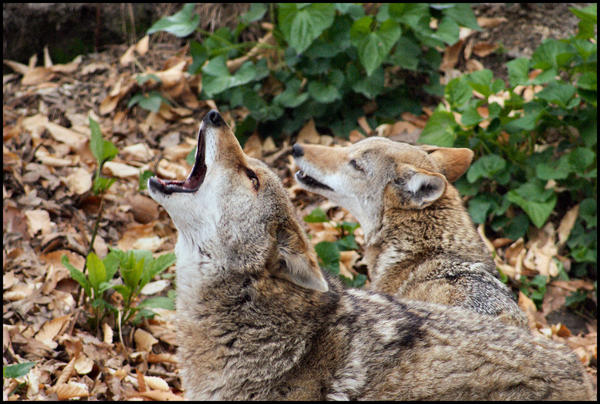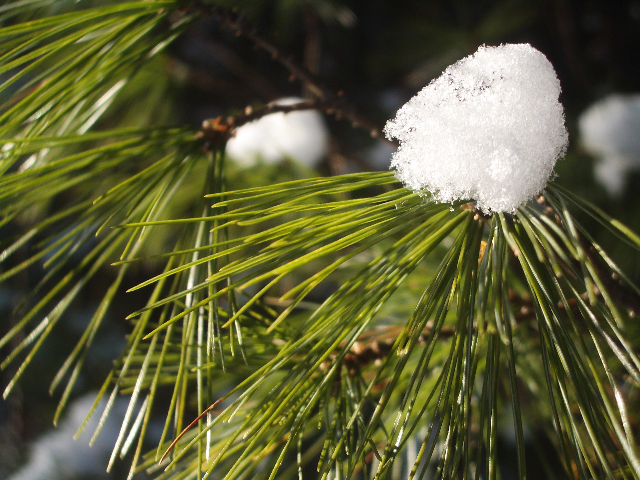Guest Contribution by Maria Noel Groves of Wintergreen Botanicals.
It’s easy to fall in love with store-bought herbs. They’re so easy, and often they are good quality. However, it is important not to forget the many healing herbs that grow wild in our very own backyards. These plants are there for us to appreciate and call on in times of need.
Hemlock (Tsuga canadensis)

Hemlock groves are my favorite place to visit in winter. They tend to grow in wet areas near swamps, creeks, and streams in groups. They release chemicals (in shed needles) and create a thick layer of shade that inhibit the growth of other plants, which makes it easy to walk under them during warmer months. Yet, the darkness created by a hemlock grove in summer has always been spooky to me, particularly at dusk. If you stand in some hemlock groves and listen, you can hear water gently running and bubbling under a thin earthen mat created by their root systems.
In winter, however, the eerie darkness of a hemlock grove is replaced by the bright white of snow clinging to its branches, creating a winter wonderland. Because the snow sticks so readily to the flat needled branches of the hemlock tree, the snow under a hemlock can be much less deep than the surrounding area. It’s a joy to stand enclosed in the snow-encrusted branches and admire their beauty. If the snow is fresh, you can examine it closely on the branch to see the shapes of the snow crystals. I like to nibble a few needles on the end of a hemlock branch; it tastes pleasantly like a Christmas tree, slightly sweet, and is a moderate source of vitamin C. In the winter, no walk in the woods is complete without a nibble on some hemlock needles, which helps me feel more connected with the forest. (If there’s no snow, I also like to eat a young leaf of a wintergreen plant.)
Along with pine, hemlock is our most common wild evergreen in this area. Grouse, rabbits, deer, red squirrels, and porcupines all enjoy the food and shelter provided within a hemlock grove—so keep an eye out for them when traveling through one. The tannins in hemlock bark was once used by the tanning industry. Native Americans have been known to pound the inner bark into a flour or thickener. The tea, as with it’s comrades mentioned above, is pleasant-tasting and contains some vitamin C. The trees can grow quite tall and old. However, height is not a good determinant of age since a hemlock may stay stunted for many years in the shade of larger trees. The oldest recorded hemlock tree was 988! Hemlock groves are relatively impermeable except by humans, disease, fire, or pests. Right now the hemlock wooly adelgid threatens to destroy our local hemlock groves—a white, cobwebby substance on the branches indicates its presence.
Medicinal Actions: The hemlock’s medicinal uses of the needles, bark, branches and essential oil are essentially the same as for Balsam Fir, below. The pitch/resin would presumably be used the same, but I don’t find it as prolific. Cautions: The same as for Balsam Fir, below. Please note that hemlock tree is completely unrelated to the parsley-family plants poison and water hemlock. It is coincidence that it has the same name. Poison and water hemlocks are deadly poisonous. Hemlock tree is not. (Note: Hemlock essential oil is often substituted for spruce.)
About Maria:
Clinical herbalist Maria Noel Groves runs Wintergreen Botanicals, an herbal clinic and education center nestled in the pine forests of Bear Brook State Park, NH. She achieved certification through the Southwest School of Botanical Medicine and also completed programs with Rosemary Gladstar and Nancy Phillips. Her life has been devoted to herbs for more than 15 years. For recipes, articles, resources, virtual plant walks, and more about herbal medicine, visit www.WintergreenBotanicals.com.


1 thought on “An Herbalist’s View of Hemlock”